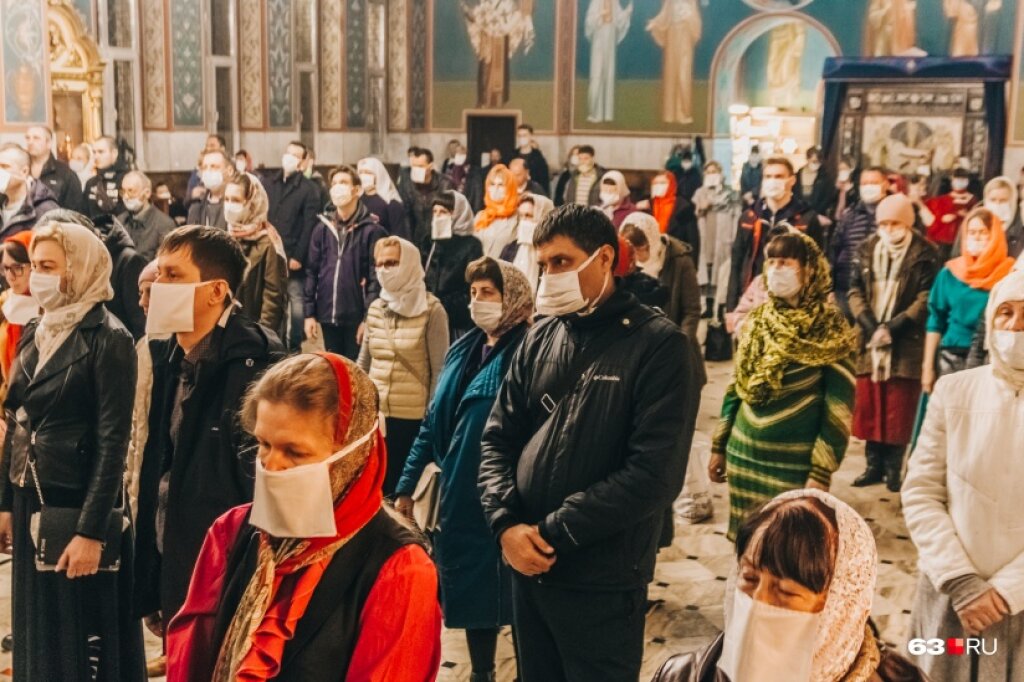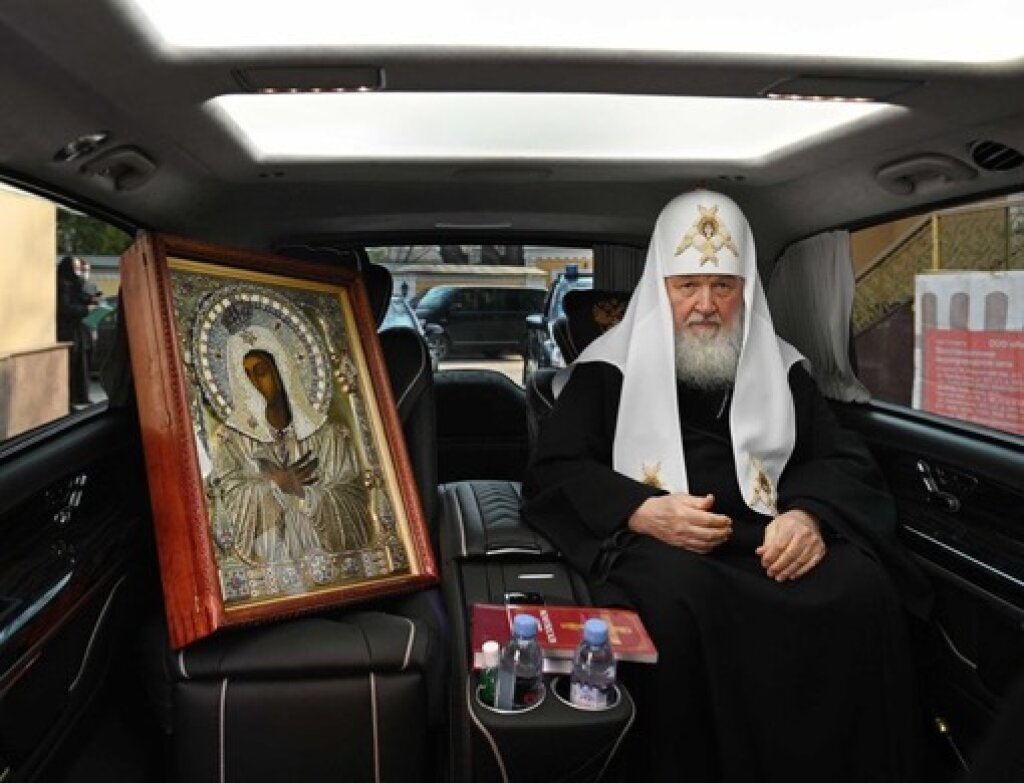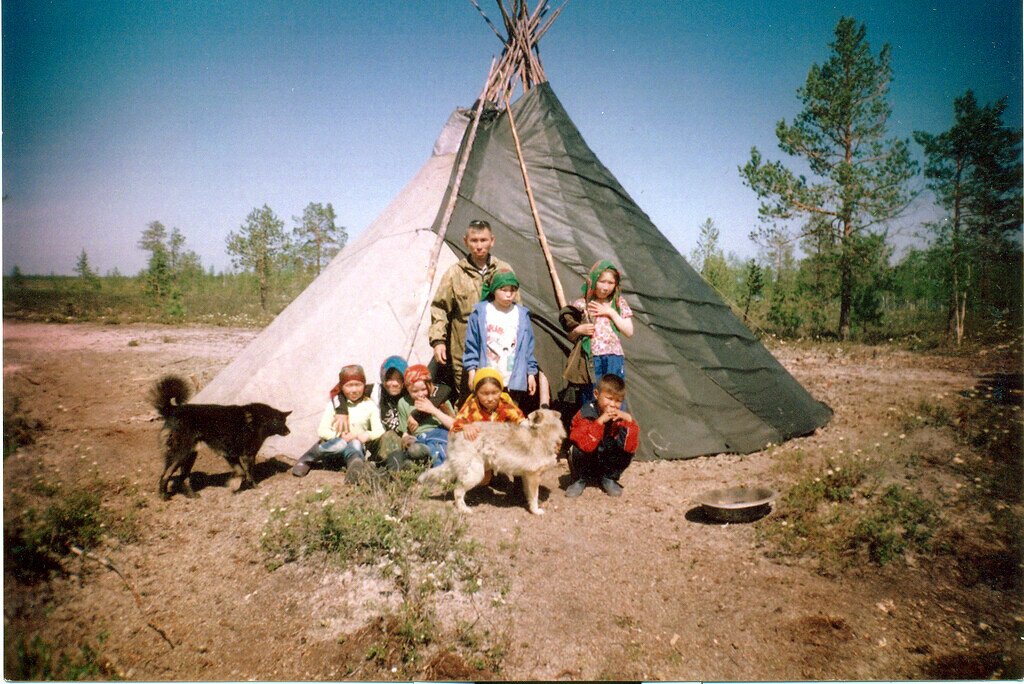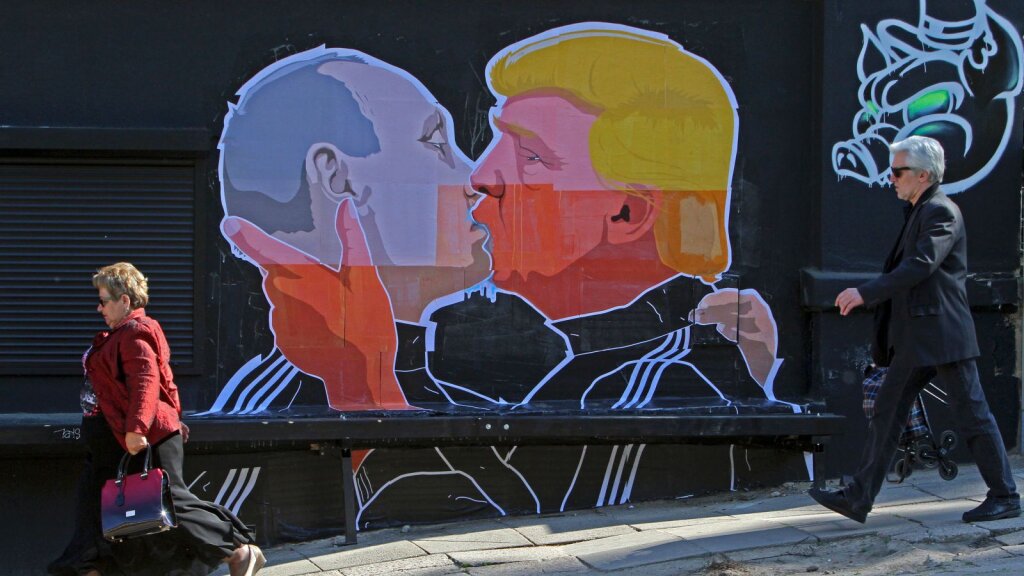Kathryn David received her PhD in history from NYU in 2020. She is currently a post-doctoral fellow at the Institute for Advanced Study (Lichtenberg-Kolleg) at the University of Göttingen.
On April 3, Patriarch Kirill of the Russian Orthodox Church made headlines by processing with an icon of the Virgin Mary to pray for the end COVID-19. In the name of social distancing, Patriarch Kirill did not go on foot but led the procession from the backseat of a black Mercedes, which drove 68 miles around Moscow. The story seemed remarkable to some, including those outside Russia, because of the odd juxtaposition of religious objects and the trappings of upper-class urban life. In one photo shared by BBC Russia correspondent Andrey Zakharkov, Patriarch Kirill sits in a luxury car, chauffeured around Moscow’s Ring Road like a businessman, but instead of wearing a suit he is wearing priestly vestments. In the cupholders there are the bottles of water and hand sanitizer one might expect in a hired car, but on the seat next to him sits а 19th century icon of the Virgin Mary.
Twitter" width="510" height="390" />
Yet Patriarch Kirill’s procession by car is remarkable for another reason, as well: his willingness to demonstrate, to an audience of believers and non-believers alike, how the Russian Orthodox Church would be adapting their practices to comply with state measures to combat COVID-19. The combination of hand sanitizer — a secular object meant to help prevent the disease — and the Virgin Mary – a holy object in the back seat of the car — would be a pairing replicated in church spaces, where priests had already begun sanitizing icons with alcohol after believers kissed them, and introducing disposable spoons for taking communion. As Easter quickly approached, state authorities declared that these measures would not be enough and churches throughout Russia were ordered to be closed after Palm Sunday services on April 12th.
Yet a vocal contingent of priests have opposed these rules, protesting both state intervention into how their religious traditions should be practiced as well as the right of secular authorities to close down sacred sites. A report in Meduza about this opposition cited the example of a parishioner saying of police offers shutting down sacred spaces, “Who are these people to keep me out of church?” While Putin did not go to church on Easter and emphasized in a fireside address to the nation that Easter can be celebrated at home, many did not listen. On Easter Sunday, in defiance of local ordinances, some Orthodox Churches remained open and allowed people to attend services, while others permitted people to crowd outside to hear the liturgy.
The enormous variances in how priests chose to observe Easter this year in Russia hints at the broader context that frames the divide between those following church-related COVID restrictions and those ignoring them: the complex relationship between the Moscow Patriarchate and the Russian state. While many commentators have remarked on the tight partnership between the church and state in contemporary Russia, with some going so far as to characterize the church as simply an instrument of Putin’s government, the responses of priests and parishioners to COVID restrictions reveals the cracks in the foundation of this relationship.
The willingness of the clergy to defy secular authorities in the extreme circumstances of this pandemic complicates the picture of a Church that is often presented to the public as unified among its ranks as a partner of the Russian state. The diversity of views among the clergy and Orthodox believers in Russia, long remarked upon by anthropologists and sociologists, has now been thrust into the spotlight. On Easter, which churches were open and which were closed, and how priests confronted (or not) the police sent to shutter their churches, has laid bare the divisions within the church and divergent views on the relationship between the church and the state.
The church’s response to COVID-19 restrictions is certainly not the first time prominent clergymen have publicly clashed with state authorities. Last fall, a group of Russian Orthodox priests signed an open letter in support of freeing prisoners arrested during the Summer 2019 election protests in Moscow. Church activists have also found the state a reluctant partner in unpopular initiatives like mandatory religious education, restoration of expropriated property, and restrictions on abortion.
A particular feature of opposition to COVID restrictions is that the state can mobilize the tenets of science and public health to argue for their position. Those who have defied state regulations have not been typically portrayed as religiously motivated conscientious objectors rallying against the powerful Russian state, but as irrational individuals ignoring measures designed for public safety. The images shared on social media of priests leading crowded religious services have been shared by some with the same anger and incredulity as pictures of crowded beaches in Florida in late March.
The officially atheist Soviet Union promoted science as a counterweight to religious belief through what Soviet policymakers and social scientists called “scientific atheism.” As historian Victoria Smolkin argued in her book on Soviet atheism, even as atheist agitators were instructed to present to their Soviet audience the idea that religion and science were irreconcilable, they more often than not discovered how religious faith and the belief in science and technology could easily co-exist. In today’s Russia, the policies the Church is adopting in response to public health regulations put that co-existence on display. A Patriarch can process around the city with an icon, but he should be sure to bring hand sanitizer with him.
But the mobilization of science as a justification for intervention into religious life is not without its contradictions. While in the case of COVID, the Russian state is willing to cite public health to shut down church activities, it was not willing to make the same intervention in response to members of the church spreading dangerous misinformation on other public health issues like Russia’s HIV epidemic. The idea that the state is on the side of science and the church is against it may give the state the support it needs from the public to intervene in church life, but it is a dichotomy that does not hold up to closer scrutiny.
The changes to daily life brought on by the COVID-19 pandemic have already radically altered how individuals see the state and its role in their daily life. Many of those who have historically not supported a more robust welfare state or mass surveillance now tend to favor those measures. There may be a similar shift afoot in how the Russian public, believers and non-believers, and outside observers see the Russian Orthodox Church and its relationship to the state.
While there has always been both left-wing and right-wing opposition to the Russian state’s perceived power over the church, it is unclear what the dividing lines are between those church authorities willing to abide by state regulations and those who are not. The political leanings of believers who support the closure of church buildings in the name of enforcing public health measures and those who showed up to church on Easter remain to be examined. The clashes over state restrictions on religious life have the potential to open up new divisions within the church, jeopardizing the already fragile idea of the Moscow Patriarchate as a partner of the Russian state. The state’s decision to mobilize scientific and public-health discourses to assert its authority over the church may give it the power to shape debates over the role of religious institutions in Russian society for years to come.




